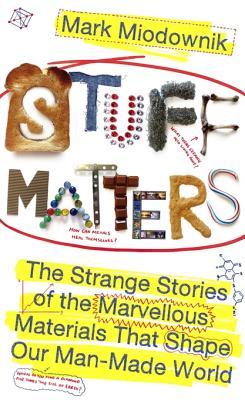More on this book
Community
Kindle Notes & Highlights
Read between
November 19 - December 10, 2022
The melting point of a metal is an indicator of how tightly the metal atoms are stuck together and so also affects how easily the dislocations move. Lead has a low melting point and so dislocations move with consummate ease, making it a very soft metal. Copper has a higher melting point and is stronger. Heating metals allows dislocations to move about and reorganize themselves, one of the outcomes of which is that it makes metals softer.
Alloys tend to be stronger than pure metals for one very simple reason: the alloy atoms have a different size and chemistry from the host metal’s atoms, so when they
sit inside the host crystal they cause all sorts of mechanical and electrical disturbances that add up to one crucial thing: they make it more difficult for dislocations to move. And if dislocations find it difficult to move then the metal is stronger, since it’s harder for the metal crystals to change shape. Alloy design is thus the art of preventing the movement of dislocations.
Alloy design is thus the art of preventing the movemen...
This highlight has been truncated due to consecutive passage length restrictions.
These atom substitutions happen naturally inside other crystals too. A crystal of aluminium oxide is colourless if pure but beco...
This highlight has been truncated due to consecutive passage length restrictions.
These atom substitutions happen naturally inside other crystals too. A crystal of aluminium oxide is colourless if pure but beco...
This highlight has been truncated due to consecutive passage length restrictions.
of iron atoms: it is the gemstone called sapphire. Exactly the same aluminium oxide crystal containing impurities of...
This highlight has been truncated due to consecutive passage length restrictions.
of iron atoms: it is the gemstone called sapphire. Exactly the same aluminium oxide crystal containing impurities of...
This highlight has been truncated due to consecutive passage length restrictions.
Steel, the alloy of iron and carbon, is even stronger than bronze, with ingredients that are much more plentiful: pretty much every bit of rock has some iron in it, and carbon is
present in the fuel of any fire.
(the carbon in steel doesn’t take the place of an iron atom in the crystal, but is able to squeeze in between the iron atoms, creating a stretched crystal).
The Samurai innovation was to be able to distinguish high-carbon steel, which is hard but brittle, from low-carbon steel, which is tough but relatively soft.
The Samurai innovation was to be able to distinguish high-carbon steel, which is hard but brittle, from low-carbon steel, which is tough but relatively soft.
Accidentally, by getting the ratios of two alloy ingredients right, carbon and chromium, he had managed to create a very special crystal structure in which the chromium and carbon atoms were both inserted inside the iron crystals.
The impact in terms of energy usage of a single-use paper bag has been found to be greater than that of a plastic bag.
concrete doesn’t dry out. Quite the opposite, water is an ingredient of concrete. When concrete sets, it is reacting with the water, initiating a chain of chemical reactions to form a complex microstructure deep within the material, so that this material, despite having a lot of water locked up inside it, is not just dry but waterproof.
But, as luck would have it, steel and concrete have almost identical coefficients of expansion.
Self-healing concrete has these bacteria embedded inside it along with a form of starch, which acts as food for the bacteria.
Chocolate also contains cannabinoids, which are the chemicals responsible for the high experienced from smoking dope. But again the percentages are tiny, and when blind taste studies were carried out to analyse chocolate cravings, researchers found little evidence that any of these chemicals were linked to feelings of craving.
If all light was scattered equally, the sky would look white. But it doesn’t. The reason is that the shorter wavelengths of light are more likely to be scattered than the longer ones, which means that blues get bounced around the sky more than reds and yellows. So instead of seeing a white sky when we look up, we see a blue one.
This Raleigh scattering, as it is called, is very slight indeed, so you need an enormous volume of gas molecules to see it: the sky works but a room full of air doesn’t.
Aerogels were created out of pure curiosity, ingenuity and wonder. In a world where we say we value such creativity, and give out medals to reward its success, it’s odd that we still use gold, silver and bronze to do so. For if ever there was a material that represented mankind’s ability to look up to the sky and wonder who we are; if ever there was a material that represented our ability to turn a rocky planet into a bountiful and marvellous place; if ever there was a material that represented our ability to explore the vastness of the Solar System while at the same time speaking of the
...more
Perhaps it is because we look through it rather than at it that glass has not become part of the treasured fabric of our lives. The very thing that we value it for has also disqualified it from our affections: it is inert and invisible, not just optically, but culturally.
these layers are held together by the universal glue of the material world, a weak set of forces generated by fluctuations in the electric field of molecules, called van der Waals forces.
On Earth, ninety-four different types of atom naturally exist, but eight of these elements make up 98.8 per cent of the mass of the Earth: iron, oxygen, silicon, magnesium, sulphur, nickel, calcium and aluminium. The rest are technically trace elements, including carbon.


